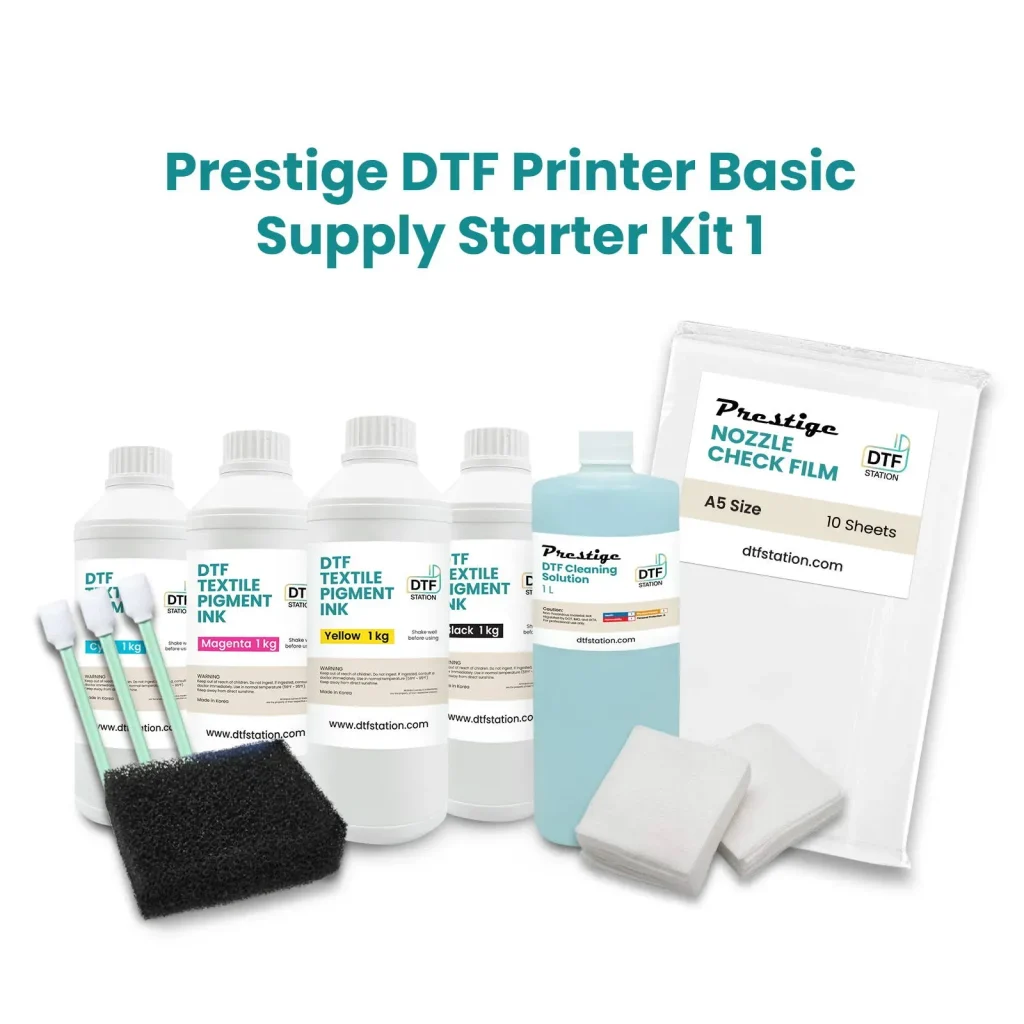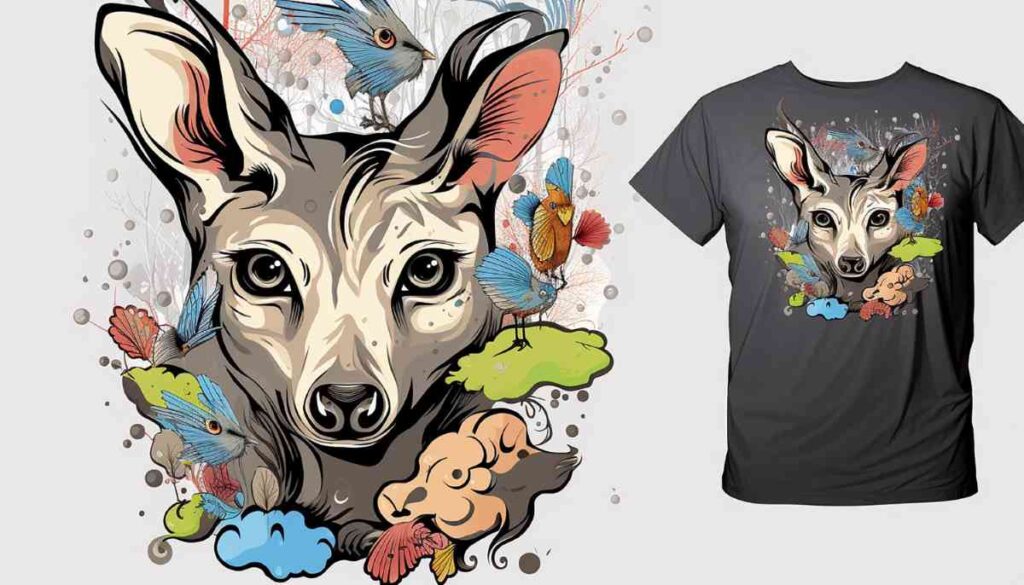DTF Supplies are essential for anyone looking to harness the power of Direct-to-Film (DTF) printing technology. This innovative method of transferring designs onto fabrics has revolutionized the custom printing landscape, offering unmatched color vibrancy and detail retention. To ensure high-quality prints and delighted customers, it’s crucial for businesses to invest in the right DTF printing supplies, including printers, films, inks, and more. In this engaging guide, we not only list the must-have DTF supplies but also provide insights to elevate your printing game. Join us as we delve into the world of DTF and explore how you can optimize your production with the right tools.
When it comes to creating stunning textile prints, the game-changing technology of Direct-to-Film printing stands out. This digital transfer method relies on a particular set of materials and equipment often referred to as DTF resources. These include tools like specialized printers, transfer films, inks formulated for striking results, and adhesive powders that promote durability. Knowing the essentials of these printing resources is vital for anyone interested in stepping into custom fabric design or enhancing their existing setup. Explore the realm of DTF printing materials and discover how they can unlock your creative potential.
The Importance of Choosing the Right DTF Printer
Choosing the right DTF printer is arguably the most critical decision in your DTF setup, as it can significantly influence the quality of your finished products. DTF printers are specifically engineered to handle the unique requirements of this process, such as printing on specialized DTF film with precision. High-quality printers utilize advanced technologies, like piezoelectric print heads, to achieve vibrant colors and detailed images that will make your designs pop. Moreover, investing in a reliable printer ensures consistent performance, reducing the likelihood of print failures that can lead to wasted materials and increased costs.
Beyond the technical specifications, consider factors such as user reviews and brand reliability when selecting your DTF printer. Manufacturers with good customer support and service can provide valuable assistance when troubleshooting issues or upgrading equipment. Furthermore, compatibility with other essential DTF printing supplies, such as films and inks, should be assessed to ensure seamless operation. By carefully selecting a DTF printer that meets your specific production needs and quality expectations, you can set a strong foundation for your printing business.
Understanding DTF Film and Its Role in the Transfer Process
DTF film is a crucial component of the Direct-to-Film transfer process, serving as the canvas on which designs are printed before being transferred onto fabrics. This film is typically made from PET and varies in thickness and coating, which can affect the adhesion and quality of your prints. High-quality DTF film ensures that colors remain vibrant and intact during the transfer, making it essential for creating eye-catching designs. Any imperfections in the film can lead to undesirable results, emphasizing the importance of sourcing the right type that aligns with your printer’s capabilities.
Moreover, understanding how DTF film interacts with other supplies is key for achieving optimal results. For instance, the film’s compatibility with the specific DTF ink used can greatly influence color accuracy and durability. Additionally, proper storage and handling of DTF film are critical to ensure it remains free of dust and damage, which could compromise print quality. By investing in premium DTF film and understanding its application within the transfer process, you can ensure your designs turn out as intended, thereby delighting your customers.
Selecting the Best DTF Inks for High-Quality Prints
The choice of DTF inks can dramatically impact the vibrancy and longevity of your printed designs. Unlike conventional inks, DTF inks are formulated explicitly for creating transfers that adhere well to fabrics. These water-based inks deliver rich color saturation and excellent durability, ensuring that prints maintain their quality even after multiple washes. It’s vital to choose inks labeled specifically for DTF use; using the wrong ink type could lead to complications in the printing process or inferior results.
Additionally, you should also consider the size of your ink color palette. A broader range allows for more creative flexibility, enabling you to achieve nuanced shades and gradients in your designs. When sourcing DTF inks, look for brands that offer reliable performance, consistent color delivery, and safety certifications to ensure that your products are safe for the end-users. Paying attention to these details ensures that your prints not only look great but are also vibrant and long-lasting.
The Essential Role of Adhesive Powder in DTF Printing
Adhesive powder plays a pivotal role in the Direct-to-Film printing process, acting as the bonding agent between the printed design and the fabric. Once your design has been printed on DTF film, the next step involves applying the hot-melt adhesive powder while the ink is still wet. This powder ensures that the ink adheres perfectly to the fabric during the heat press process. Choosing a high-quality adhesive powder is essential, as inferior products can lead to issues like peeling or fading, ultimately compromising the integrity of your prints.
Moreover, it’s essential to follow the correct application techniques to maximize the adhesive powder’s efficiency. Properly distributing the powder and ensuring even coverage is critical for optimal adhesion. Once applied, the powder’s activation through heat pressing transforms it into a strong bond that secures the print onto the material. By understanding the importance of this supply and selecting the right type, you ensure the best possible outcomes for your designs, enhancing both their durability and visual appeal.
Investing in a Quality Heat Press Machine
A quality heat press machine is indispensable in the DTF printing process, as it directly affects the consistency and effectiveness of your designs’ transfer onto fabrics. These machines must provide even heat distribution and adjustable pressure settings to accommodate various materials and thicknesses, thereby ensuring thorough bonding of the adhesive and the ink. When selecting a heat press, look for digital controls that allow you to monitor and adjust temperature and time settings accurately—these features are crucial for achieving uniform results.
Additionally, the type of heat press you choose can impact your workflow significantly. Manual presses may require a bit more effort, while automatic ones can speed up the process, especially in high-volume production scenarios. Furthermore, consider the size and weight of the heat press to ensure it fits comfortably in your workspace and can handle the garments you will be working with. By investing in a reliable heat press, you set the stage for successful DTF transfers that will impress your customers.
The Necessity of Protecting Your Workspace with Proper Equipment
When working with DTF printing supplies—inks, powders, and films—it’s crucial to prioritize safety and cleanliness in your workspace. Using proper protective gear, such as gloves, masks, and goggles, can shield you from potential hazards associated with handling chemicals. Not only does this protect your health, but it also ensures that your work environment remains free from contamination, which could negatively impact your prints. Establishing a safe working routine is essential for anyone serious about entering the DTF printing business.
In addition to personal protective equipment, maintaining a clean workspace helps prolong the lifespan of your equipment and reduce the risk of mishaps. Regularly investing time into cleaning your printers, heat presses, and other tools ensures they remain in optimal condition for high-quality output. By committing to safety and cleanliness, you not only protect yourself but also enhance the overall performance and results of your DTF printing operation.
Frequently Asked Questions
What are the essential DTF printing supplies for beginners?
For beginners in DTF printing, essential DTF supplies include a reliable DTF printer, high-quality DTF film, DTF inks, and adhesive powder. These items are crucial for producing high-quality transfers. Additionally, a heat press machine and compatible design software are important for achieving optimal results.
How do I choose the right DTF printer for my printing needs?
When selecting a DTF printer, consider factors such as color vibrancy, compatibility with DTF films and inks, and reliability. Look for printers that utilize piezoelectric technology, as they offer superior color detail. Popular brands also provide customer support, which can be beneficial for troubleshooting.
What type of DTF film is best for achieving high-quality prints?
The best DTF film is typically made from high-quality polyethylene terephthalate (PET) and comes in various thicknesses. It’s essential to choose a film that withstands heat and pressure without warping. Ensuring compatibility with your DTF printer is also vital for obtaining the best transfer results.
How does the DTF transfer process work?
The DTF transfer process involves printing your design onto DTF film using specialized DTF inks, applying adhesive powder over the wet ink, and then heat pressing the design onto the fabric. The heat press activates the adhesive powder, ensuring the ink bonds effectively to the material.
What should I look for in DTF inks to ensure vibrant prints?
When choosing DTF inks, look for water-based formulations specifically designed for DTF printing. These inks should provide vivid colors, high-resolution images, and durability over time. It’s also important to ensure they meet safety standards for a secure printing environment.
Are there any safety precautions I should take when using DTF supplies?
Yes, safety is crucial when using DTF supplies, particularly with inks and powders. Always wear protective equipment such as gloves, masks, and goggles to safeguard against chemical exposure. Maintaining a clean workspace and proper ventilation is also essential for a safe printing experience.
| Item | Description |
|---|---|
| DTF Printer | A specialized printer essential for producing high-quality transfers with vibrant colors. |
| DTF Film | Made from PET, this film is critical for transfer quality and comes in various thicknesses. |
| DTF Inks | Water-based inks formulated for vivid colors and durable prints, compatible with DTF processes. |
| Adhesive Powder | A hot-melt powder that bonds ink to fabric, ensuring durability and quality of prints. |
| Heat Press Machine | Essential for applying heat and pressure for successful transfers, adjustable for precision. |
| Computer Software | Design software that supports DTF printing and enhances the creative process. |
| Transfer Tape (Optional) | Useful for advanced applications, helps in positioning designs accurately. |
| Protective Equipment | Includes gloves, masks, and goggles to ensure safety when handling chemicals. |
| Cleaning Supplies | Maintenance kit for printer upkeep, ensuring longevity and print quality. |
Summary
DTF Supplies are vital for anyone looking to excel in custom printing. This ultimate checklist provides all the necessary tools and equipment to ensure high-quality prints, making it easier to attract and retain satisfied customers. Each component, from the DTF printer to protective equipment, plays a crucial role in the DTF printing process. By investing in high-quality supplies and following best practices, you can elevate your printing capabilities, produce exceptional designs, and build a successful business. Embrace the potential of DTF printing with this comprehensive guide and set yourself up for success!



